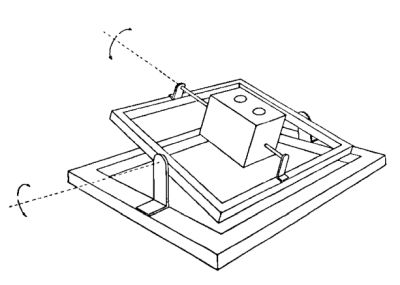Purpose of the flight and payload description
The objective of the flight was to measure the solar constant using a pyrheliometer at 31 kilometers altitude. The solar constant is the rate at which energy is received upon a unit surface normal to the sun's direction in free space at the earth's mean distance from the sun. A pyrheliometer is an instrument that can measure direct beam solar irradiance: sunlight enters the instrument through a window and is directed onto a thermopile which converts heat to an electrical signal that can be recorded.
Two units of a special Eppley Normal Incidence pyrheliometer were used for the flight measurements. These units were special in that the temperature of the instrument was stabilized by the circulation of liquid from a reservoir through the space between the double walls of the collimating tube and a coil in the thermopile housing. In addition for the precision sought in this measurement it was necessary to enclose the pyrheliometers in a thermal enclosure and the fluid was also circulated through coils on the walls of this enclosure.
The pyrheliometers were oriented towards the Sun using a system designed to operate around the two axes shown in the figure at left, rather than the azimuth and elevation axes. The data generated by the pyrheliometers as well as the auxiliary information required for the interpretation of the results and monitoring the performance of the various units were recorded by means of an on-board digital magnetic tape recording system. The data were also telemetered by means of an FM/FM telemetry system, this system being used as a backup and also to monitor the overall system performance during the flight on a real time basis.
All units were designed to operate from either 28 vdc or 115 vac 400 cycle power. The 28 vdc was supplied by means of a silver zinc primary battery and the 400 cycle power wag derived from the 28 vdc by means of transistorized converters. A gondola constructed of electrical conduit arranged to form a proper configuration was used to protect the various units. The biaxial control system and the pyrheliometers were further protected by shock mounting them to the gondola.
Details of the balloon flight
Balloon launched on: 6/26/1967 at 6:01 MST
Launch site: Holloman Air Force Base, Alamogordo, New Mexico, US
Balloon launched by: Air Force Cambridge Research Laboratories (AFCRL)
Balloon manufacturer/size/composition: Zero Pressure Balloon Winzen - 2.000.000 cuft (Stratofilm 1,5 mil)
Flight identification number: H67-49
End of flight (L for landing time, W for last contact, otherwise termination time): 6/26/1967 at 8:52 MST
Balloon flight duration (F: time at float only, otherwise total flight time in d:days / h:hours or m:minutes - ): 3 h 30 m
External references
- AFCRL Space Science Research during 1967 (annual report to COSPAR) Special repts. no. 70, 1 Jan-31 Dec 1967
- The measurement of the solar constant from high altitude balloons Tellus, 21: 620-624 (1969)
6928If you consider this website interesting or useful, you can help me to keep it up and running with a small donation to cover the operational costs. Just the equivalent of the price of a cup of coffee helps a lot.


